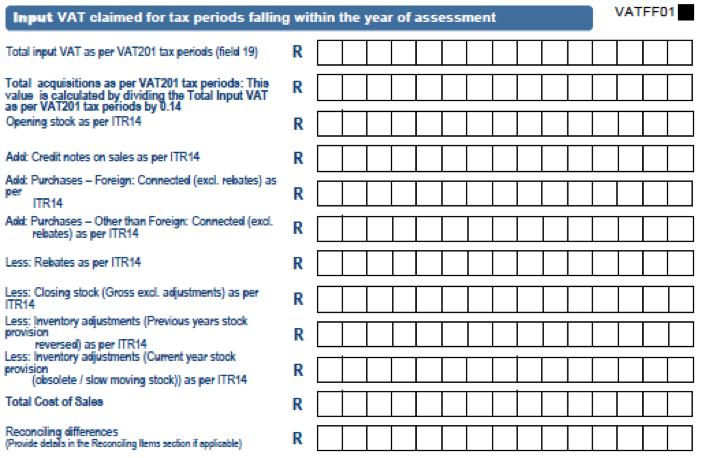

ĭuring the second half of the 20th century, value-added tax (VAT) emerged as a modern form of consumption tax throughout the world, with the notable exception of the United States. He estimated that global tax evasion amounts to 5 percent of the global economy. Tax campaigner Richard Murphy's estimate of the ten countries with the largest absolute levels of tax evasion. Evasion of value-added tax and sales taxes Smugglers do not pay duty since the transport is covert, so no customs declaration is made. Smuggling is resorted to for total evasion of customs duties, as well as for the import and export of contraband. Smuggling is import or export of products by illegal means.
#VAT 201 FORMS CODE#
Code commensurate with a lower rate of duty. Production description is changed to match a H. Misdeclaration of quantity is more relevant for products with specific duty. When there is ad valorem import duty, the tax base can be reduced through under-invoicing. Importers attempt to evade customs duty by (a) under-invoicing and (b) misdeclaration of quantity and product-description. The Iatter is based on the foundation that tax compliance is costly for individuals as well as firms (tax filling, bureaucracy), hence not paying taxes would be more economical in their opinion.Ĭustoms duties are an important source of revenue in developing countries. The former is mainly rooted in the costly enforcement of the taxation law.

The tax gap is mainly growing due to two factors, the lack of enforcement on the one hand and the lack of compliance on the other hand. The tax gap describes how much tax should have been raised in relation to much tax is actually raised. concluded based on random stratified audits and leaked data that occurrence of tax evasion rises sharply as amount of wealth rises and that the very richest are about 10 times more likely than average people to engage in tax evasion. Tax Reform Act of 1986 appears to have reduced tax evasion in the United States. Income tax evasion appears to be positively influenced by the tax rate, the unemployment rate, the level of income and dissatisfaction with government. Empirical work is required to resolve the theoretical ambiguities. Alternative specifications, however, yield conflicting results concerning both the signs and magnitudes of variables believed to affect tax evasion. The literature's theoretical models are elegant in their effort to identify the variables likely to affect non-compliance. Later studies however, pointed limitations of the model, highlighting that individuals are also more likely to comply with taxes when they believe that tax money is appropriately used and when they can take part on public decisions. According to the authors, the level of evasion of income tax depends on the detection probability and the level of punishment provided by law. This model deals with the evasion of income tax, the main source of tax revenue in developed countries. Sandmo produced, in 1972, an economic model of tax evasion. In 1968, Nobel laureate economist Gary Becker first theorized the economics of crime, on the basis of which authors M.G. The "Big 7" shown are Hong Kong, Ireland, Lebanon, Liberia, Panama, Singapore, and Switzerland. The ratio of German assets in tax havens in relation to the total German GDP, 1996–2008. Tax evasion and tax avoidance can both be practiced by corporations, trusts, or individuals. Both tax evasion and tax avoidance can be viewed as forms of tax noncompliance, as they describe a range of activities that intend to subvert a state's tax system, but such classification of tax avoidance is disputable since avoidance is lawful in self-creating systems. In contrast, tax avoidance is the legal use of tax laws to reduce one's tax burden. One measure of the extent of tax evasion (the "tax gap") is the amount of unreported income, which is the difference between the amount of income that should be reported to the tax authorities and the actual amount reported. Tax evasion is an activity commonly associated with the informal economy. Tax evasion often entails the deliberate misrepresentation of the taxpayer's affairs to the tax authorities to reduce the taxpayer's tax liability, and it includes dishonest tax reporting, such as declaring less income, profits or gains than the amounts actually earned, or overstating deductions. Tax evasion is an illegal attempt to defeat the imposition of taxes by individuals, corporations, trusts, and others.


 0 kommentar(er)
0 kommentar(er)
